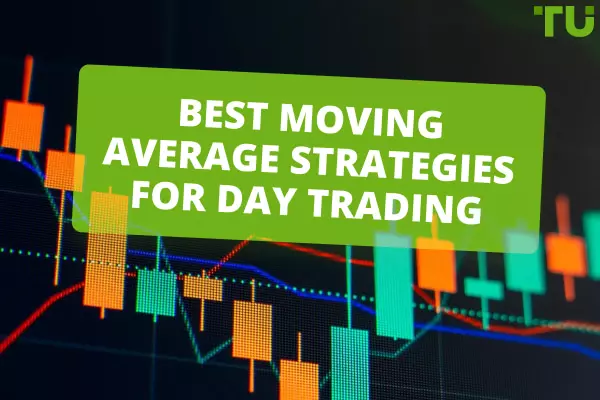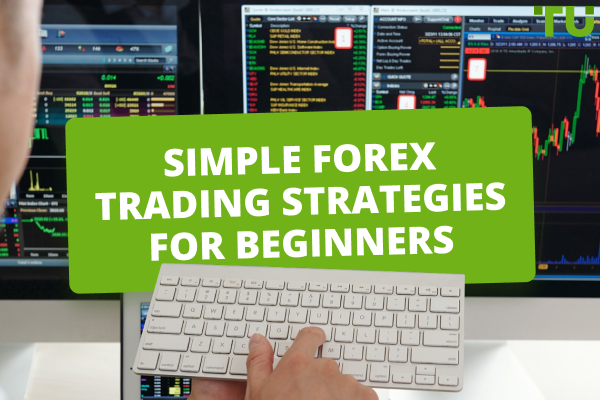How To Day Trade With $100 Dollars?
To day trade with $100 you need:
-
Find a broker with adequate requirements to the minimum deposit size
-
Choose stable liquid assets for day trading (for example EUR/USD)
-
Determine strategy (Scalping or another)
-
Start day trading
Day traders who want to turn $100 into $1,000 need to choose a reliable broker that sets loyal requirements for the size of the minimum deposit and does not charge any additional commissions, decide on assets and strategies, and adhere to the rules of risk management.
Day-trading is short-term transactions on the stock exchange, which are opened and closed during one trading session. And sometimes the number of deals made by a trader who uses this strategy can exceed a hundred. Intraday trading has many advantages, including the lack of dependence on news of global importance and quick results. But the main advantage is that for short-term trades, you can use smaller amounts than with other approaches, which also minimizes the risk of significant losses.
But is 100 dollars enough to successfully trade intraday? Experts will try to find the answer to this question in today's material. Day trading with 100 dollars can be a difficult task because of the limited capital, but even with such a small budget you can make money. To do this, you should master the theory, choose a suitable broker, decide on a strategy and strictly adhere to the rules of risk management. Also, to increase your profits, you can trade using leverage, but be aware of potential risks.
-
Can I day trade with $100?
Yes, this is entirely possible, but it's important to remember that intraday trading involves making multiple trades within a single day to capitalize on short-term price fluctuations. This means that with a small starting capital, each trade represents a significant portion of your total funds, increasing both potential profits and losses.
-
Is $100 enough to make money?
Trading with 100 dollars is a "simulator" for beginners. This amount is enough to start, but not enough to earn big money. Starting with 100 dollars, you gain the necessary experience, test various strategies, learn to manage your emotions and get an opportunity to figure out whether trading is suitable for you.
-
Is day trading risky?
The main risks of de-trading are large drawdowns, including those due to high volatility, and impressive commissions. When opening several trades each day, a trader should remember that the deductions on each trade are on average $3.
-
What are the best strategies for day traders?
The most popular day trading strategies are scalping, news trading, breakout strategy, and a trend following strategy.
How to become a day trader with $100 dollars?
So how to become a day trader? Intraday trading has become very popular in recent years. This is primarily due to the psychological aspect, as the human psyche is organized in such a way that it is peculiar to seek short-term gains. Profits are observed much more frequently during intraday trading, which makes it easier for a trader to follow a clear strategy and fix losses. But day trading also attracts users because it is usually enough to start with a small amount of money.
Below you will find a quick guide on how to become a day trader on a limited budget, and which strategies to emphasize.
Find a Broker
The success of a day trader directly depends on which broker he or she chooses. You can easily use Traders Union's Find my Broker tool to choose a broker based on dozens of parameters. Here are a few important nuances:
-
License. The first thing to check is whether the broker has a license. Its activity should be officially regulated by at least one of the reputable international regulators (ASIC, FCA, BaFin, CySEC, IFSC, etc.). If the company does not have any authorization documents, it is a reason to doubt its reliability
-
Minimum deposit size. Since your trading budget is limited to 100 dollars, you should look for a broker that sets adequate requirements to the minimum deposit size
-
Spread size. This item is most important for those who plan to apply scalping. Too high spreads call into question the use of this strategy, as they will simply take away most of your profit
-
Commission amounts. Some brokers charge a fixed commission per transaction, while at other brokers it depends on the volume of trades. The latter method is not very favorable for traders. Also pay attention to other costs: for example, whether the broker charges a fee for inactivity, and whether the site provides commissions for profit withdrawal
-
Leverage size. Some traders offer high leverage, which can be as high as 1:1000. But here it is important to remember one basic rule: the use of leverage increases not only the potential profit, but also the risks, so be careful
-
Execution speed. High speed of order execution is a key condition for effective trading, so if there is no information about it on the broker's website, read reviews about execution on the Internet, and also try to trade on a real cent account, if there is one
-
Technical support. This is also an important point. The company should provide users with several communication channels at once, as well as promptly respond to any requests
-
Additional opportunities to increase profits. It would be great if the broker offered additional opportunities for earning. For example, an affiliate program, bonuses (including for the first deposit) or cashback on the trading account
Choose assets
The Forex currency market is the largest and most liquid market in the world, with daily turnover exceeding the $7 trillion mark. Below we have provided a brief overview of the most popular currency pairs to help you make the right choice:
EUR/USD
The most traded currency pair, which accounts for more than 28% of daily transactions on the currency market, which is quite expected as it reflects the two largest economies in the world (USA and Europe) and is considered the most liquid of all pairs.
GBP/USD
This currency pair is especially popular among day traders, as it can be called one of the most volatile currency pairs - intraday fluctuations sometimes reach 200 pips, and this is with a relatively calm news background. It accounts for about 11% of the total trading volume on Forex.
USD/JPY
A currency pair that includes the U.S. dollar and the Japanese yen. It is the second largest trading pair on the Forex market and is considered very liquid, as the Yen is the fourth major reserve currency in the world. This pair is very sensitive to political relations between the United States and the Far East. The most volatile day of the week for the USD/JPY currency pair is Wednesday. The price moves approximately 90 pips per day.
AUD/USD
A currency pair consists of two highly liquid currencies: Australian and American dollars. In this case, the US dollar is the "quote" currency of the pair, and the value of the Australian dollar shows a strong dependence on the markets, which include some of Australia's leading export commodities: for example, iron, coal, gold and metals.
NZD/USD
The US dollar and the New Zealand dollar are both characterized by high liquidity in the currency markets. The NZD/USD pair is actively traded throughout the trading day, and the highest peak of trading activity and the largest trading volumes occur during the Asian and American sessions. NZD/USD volatility surge is observed during the publication of important macroeconomic indicators for the USA and New Zealand.
USD/CAD
The main currency in this pair is the U.S. dollar. The currency pair is characterized by low daily volatility (within 60-80 points), and the difference between buy and sell prices is usually no more than two points. The peak of activity falls during the American trading session.
Determine Strategy
Below, Traders Union experts have outlined the most popular Forex day trading strategies.
Scalping
Scalping is a slang name for one of the most famous intraday trading strategies, characterized by a very short time of holding positions with a profit margin of a few ticks. The trader's goal in this case is to close a trade on the plus side immediately after receiving the minimum profit that pays off the spread.
Scalping is a good start for those who have only 100 USD, because with the help of this strategy a trader can relatively quickly "accelerate" a small deposit to medium size. Scalping is also considered to be the best method of learning stock trading, as it forces the trader to keep a "hand on the pulse" and monitor the state of the market in an attempt to understand the reasons for certain movements. It should be noted at once that scalping does not allow you to achieve very large profits, because scalpers are focused on small changes in price and seek to earn from the volume of transactions.
The disadvantages of scalping include high risks, increased emotional stress associated with the fact that the trader must quickly make decisions and instantly react to any changes in the market, as well as large time costs. In order to succeed, you need to spend most of the day watching quotes, so scalping is not suitable for everyone.
Trend following strategy
Trend following strategy is a common trading approach used by traders to identify and capitalize on long-term market trends. This strategy is one of the most common and effective, but requires patience, discipline and the ability to correctly interpret market dynamics. Signals of the beginning of a new trend can be: fundamental factors (economic data, news about the company or events on world markets), breakdown of resistance or support levels, change of direction of moving averages, indicators of technical analysis (for example, directional movement indicators (DMI), stochastic oscillators, relative strength (RSI) and others).
Using trend following can help you capture big price movements in the market. But there is also the risk of getting caught in false moves.
Breakout strategy
A breakout in trading is when the price overcomes a resistance or support level. The strategy can be applied to any currency pair and day trading time frames, which makes it suitable for both short-term and long-term trading. "Breakout" has several important advantages - limited risk and high profit potential.
Features of the breakout strategy:
-
Selecting Breakout Levels: The trader selects key support or resistance levels at which a breakout is expected. These levels can be identified using various methods such as horizontal lines on the chart, moving averages or other technical indicators
-
Waiting for a breakout signal: The trader waits for the price to close above (in the case of a resistance level breakout) or below (in the case of a support level breakout) the selected level. This can be considered a signal of the start of a new trend
-
Volume Confirmation: Confirmation of a breakout can occur by increasing trading volume at the time of the breakout. As a result, it can be used to determine the authenticity of the price movement and the strength of the trend
-
Setting Stop Losses: To manage risk, a trader sets a stop loss order at a level that will help minimize losses in the event of an adverse outcome
-
Position Management: After a breakout, a trader can enter and manage a position in the direction of the trend using various methods such as moving stop losses or closing a portion of the position when target profit levels are reached
Trading on the news
News trading is a strategy in which traders try to capitalize on short-term price fluctuations caused by important news events or economic data. This strategy is based on the assumption that news releases can cause sharp price movements, and investors can use this to capitalize on the market.
To trade successfully on the news, a trader must be able to analyze the political and economic environment, anticipate future news and the extent of its impact, and from all events to find those that will have the greatest impact on the market. A trader who trades on the news must be particularly careful to follow quarterly reports on GDP growth, indices of business activity in manufacturing and services, indicators of employment and unemployment rates, etc.
However, it is important to remember that not all news can cause any reaction and not always the situation on the market can be explained logically and sensibly, so be extremely careful when using this strategy.
Start day trading
Here are a few steps you should take to get started Forex day trading:
-
Master the basics. Before you get into intraday trading, you should learn the basics of the financial markets, tools and terminology, and familiarize yourself with various trading strategies and market analysis techniques. Your chances of making money as a day trader are directly related to how well you have mastered theory
-
Choose a reliable broker. Choosing the right broker is the primary task of every day trader. Pay attention to the minimum deposit amount the broker has set and whether it charges extra for day trading after checking its license. Ask about commissions, leverage, available terminals, as well as the speed of order execution. If the broker's offers meet your needs and goals, create an account, verify the account and replenish the balance
-
Choose a strategy. Above we told you about the most popular trading strategies, but you can choose absolutely any one. And to practice without unnecessary risks, use a demo account
-
Choose the right assets. For intraday trading choose the same assets as for other strategies. It is important that they are characterized by volatility and high liquidity. To start with, 1-2 assets will be enough so that you can quickly follow any changes
Best Forex Brokers For Day Trading



Is $100 enough to make money?
How much money do you need to invest in order to make money? The answer to this question is quite logical: the more you are willing to invest, the more you will get in the end (with a competent approach, of course). For example, a couple of dollars is enough to open a deal on a cent account. However, if you want to become a professional day-trader, you will need at least 100 dollars.
With a deposit of 100 USD and using the maximum leverage of 1:1000 to reduce the collateral level, you can open trades with the minimum allowable volume without violating the rules of risk management (the allowable risk per trade is up to 5% of the deposit amount). But it should be taken into account that this amount is not enough for trading to become your main source of income.
Do not try to quickly increase your deposit, do not be afraid to experiment, testing new instruments, do not be influenced by emotions and the main advice - do not be afraid to lose money when opening trades for the first time. Remember that everyone makes mistakes, and your main goal is to hone your skills on the real market. If you lost 100 dollars, it's payment for the lesson, and if you were able to earn - you have made one more step on the way to professional trading.
Main day trading rules
If you decide to become a day trader, remember the basic rules that will help you succeed:
-
Be realistic. It is very important to take a realistic view of the situation. You should not expect high profits at the start, especially if you have a limited budget. With small investments, the average monthly earnings of even experienced traders range from 3-5%
-
Do not give in to emotions. The ability to control your emotions is a skill that significantly increases your chances of success. Many traders, having suffered losses, try to recover, which often leads to even greater losses. Greed in trading can also play a cruel trick on you. Do not leave a position open for too long, expecting that the price is about to increase further, as this threatens to change the trend and, consequently, losses
-
Set a daily drawdown limit. If it is exceeded, it is better to put trading on pause and understand the reasons for what happened, carefully analyzing the mistakes
-
Choose the right trading instruments. Do not chase the quantity. 1-2 assets will be quite enough for trading at the start. If you take more instruments, you risk not being able to keep track of all of them
-
Do not chase the number of trades. Enter a trade only when you see obvious setups
-
Watch the news. The release of important economic news can turn the market in any direction, so if you have chosen intraday trading, keep a close eye on new data. And here is another important tip that will keep your capital from being drained: do not trade half an hour before and after the news release
-
Do not leave positions for the next day. Some novice day traders try their luck and leave open positions overnight. It is logical that the setup you found during the day will lose its power tomorrow, so close all positions to avoid unnecessary losses
Expert opinion
Traders use various strategies to make money on financial markets - from the simplest ones, which consist of buying and holding assets, to more complex financial manipulations. And one of the most popular trading strategies is day-trading, which allows you to "accelerate" the initial deposit rather quickly.
However, one should not forget about the risks. The main risks are directly related to the psychological factor. In order to increase their capital in the shortest possible time, some traders go to too active trading activity, which often leads not to profit, but to the loss of the deposit, as investors give little time to analyze and make rash decisions. An even sadder option is the desire to "win back" after a series of unsuccessful trades. With this approach, you will never turn $100 into at least $1,000.
Here are some tips for intraday traders to achieve success: control risks and know how to stop in time, have a clear algorithm of actions, concentrate on the execution of a good deal, not on money, monitor changes in volatility and better stay out of the market when it rises sharply. Remember that deo-trading is a risky type of trading, which means that you need not only good theoretical training, but also the ability to control your own emotions, so as not to make mistakes.
Summary
Is it possible to become a Day Trader with only 100 dollars? Yes, this money is quite enough to start. But in addition to potentially high profits, you should also keep in mind the disadvantages of intraday trading - high transaction costs, psychological pressure due to the need to make quick decisions, margin risks, etc. You should also be prepared for the fact that intraday trading is time-consuming as it requires constant monitoring of markets and positions during the day. But in general, with the right choice of broker and strategy, as well as careful analysis and the ability to control risks, you can succeed in this business.
Team that worked on the article
Chinmay Soni is a financial analyst with more than 5 years of experience in working with stocks, Forex, derivatives, and other assets. As a founder of a boutique research firm and an active researcher, he covers various industries and fields, providing insights backed by statistical data. He is also an educator in the field of finance and technology.
As an author for Traders Union, he contributes his deep analytical insights on various topics, taking into account various aspects.
Dr. BJ Johnson is a PhD in English Language and an editor with over 15 years of experience. He earned his degree in English Language in the U.S and the UK. In 2020, Dr. Johnson joined the Traders Union team. Since then, he has created over 100 exclusive articles and edited over 300 articles of other authors.
Mirjan Hipolito is a journalist and news editor at Traders Union. She is an expert crypto writer with five years of experience in the financial markets. Her specialties are daily market news, price predictions, and Initial Coin Offerings (ICO).











